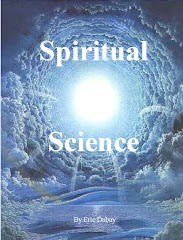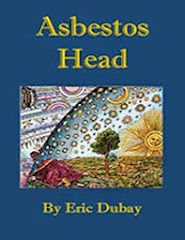Another
two mind-bending, paradigm-shattering findings in the new physics are known as “Non-Locality”
and “Quantum Entanglement.” In classical
physics, objects were seen as localized and isolated from one another within
space; through dozens of replicated and verified experiments we now know,
however, that the universe at the quantum level is entangled, non-local, One
integrated whole.
“Quantum physicists discovered a strange property in the subatomic
world called ‘nonlocality’. This refers
to the ability of a quantum entity such as an individual electron to influence
another quantum particle instantaneously over any distance despite there being
no exchange of force or energy. It
suggests that quantum particles once in contact retain a connection even when
separated, so that the actions of one will always influence the other, no
matter how far they get separated.”
-Lynne McTaggart, “The Field: The Quest for the Secret Force of the
Universe,” (11)
Before
the advent of quantum physics, Albert Einstein, still thinking in the classical
paradigm, thought that nothing in the universe could travel faster than
light. In the past two decades, however,
it has been experimentally proven that one thing can indeed move faster than
the speed of light: information. Information
can be sent between two objects at any distance instantaneously.
“In
1997, scientific journals throughout the world published the results of
something that traditional physicists say shouldn’t have happened. Reported to over 3,400 journalists,
educators, scientists, and engineers in more than 40 countries, an experiment
had been performed by the University of Geneva in Switzerland on the stuff that
our world is made of – particles of light called photons – with results that
continue to shake the foundation of conventional wisdom.” -Gregg Braden, “The Divine Matrix” (30)
This ground-breaking experiment conclusively proved the existence of
“Quantum Entanglement” which is basically a fancy name for “instantaneous
information travel.” First scientists
took single photons and split them into separate “twin” particles with
identical properties. Then they fired
both particles away from each other in opposite directions through specially
designed fiber-optic chambers. At the
end of these long pathways, the twin particles were forced to choose between
two random but exactly identical routes.
Curiously, without fail, in every trial the particles made precisely the
same choices and traveled the same paths.
Classical physics has always assumed that separate particles have no
communication with one another, but quantum physics has now proven that
assumption erroneous.
The first entanglement experiments were designed and tested in 1982 by French
physicist Alain Aspect at Orsay’s Institut d’Optique. These crude but conclusive studies later inspired
Nicholas Gisin’s University
of Geneva group of
physicists to replicate them at greater
distances. In 1997 Gisin built a 14 mile
fiber-optic chamber and repeated Aspect’s experiment with exactly the same
results. Later in 2004 Gisin extended
the chamber to 25 miles and once again, as usual, no matter how far apart, the
particles always chose and traveled the same random pathways.
“Quantum
mechanics has shown through experimentation that particles, being after all but
moving points on some infinite wave, are in communication with one another at
all times. That is to say, if our quantum mechanic does something to particle A
over in Cincinnati, Ohio, planet Earth, the experience of this event will be
instantly communicated to particle Z, at speeds faster than light, over in Zeta
Reticuli. What this suggests is that anything one given particle experiences
can be experienced by another particle simultaneously, and perhaps even by all
particles everywhere. The reason for this is that they are all part of the same
wave, the same energy flow.” –Jake
Horsley, “Matrix Warrior” (90-91)
“For
a message to travel between them, it would have to be moving faster than the
speed of light. But according the
Einstein’s theory of relativity, nothing can travel that quickly. So is it possible that these particles are
violating the laws of physics … or are they demonstrating something else to
us? Could they be showing us something
so foreign to the way we think about our world that we’re still trying to force
the mystery of what we see into the comfortable familiarity of how we believe
energy gets from one place to another?
What if the signal from one photon never traveled to reach the
other? Is it possible that we live in a
universe where the information between photons, the prayer for our loved ones,
or the desire for peace in a place halfway around the world never needs to be
transported anywhere to be received? The
answer is yes! This appears to be
precisely the kind of universe we live in.”
-Gregg Braden, “The Divine Matrix” (105-6)
Robert
Nadeau, historian of science, and Menas Kafatos, a physicist from George Mason
University wrote an
entire book together on the results and implications of quantum entanglement
and non-locality entitled, The Nonlocal Universe. In it they state, “All particles in the
history of the cosmos have interacted with other particles in the manner
revealed by the Aspect experiments … Also consider … that quantum entanglement
grows exponentially with the number of particles involved in the original
quantum state and that there is no theoretical limit on the number of these
entangled particles. If this is the
case, the universe on a very basic level could be a vast web of particles,
which remain in contact with one another over any distance in ‘no time’ in the
absence of the transfer of energy or information. This suggests, however strange or bizarre it
might seem, that all of physical reality is a single quantum system that
responds together to further interactions.”
Nadeau
and Kafatos argue that we live in a non-local universe which is the obvious
conclusion from the quantum entanglement experiments. The fact is quanta can exchange information
over any distance in the universe instantaneously. These entanglement experiments prove that
Eintstein was incorrect in stating that nothing travels faster than light
(186,000 miles per second). Quantum
information “travels” at infinite speed “arriving” at its destination without
any time elapsing. Here we see how the
Newtonian/Einsteinian language of a local universe fails to describe our actual
reality. It’s not that information is
“traveling” at infinite “speed” to “arrive” at another location, but rather
that the universe with all its so-called parts and particles is actually One
non-local quantum system. Information
from one particle to another doesn’t need to “travel” there because the space
between them is illusory, as is the language of calling them “separate” particles. As we have seen, before observation quanta
are not particles with definite attributes and location; they are merely waves
in the One universal quantum ocean until our conscious observation
individualizes the wave into droplets of experience.
“Nonlocality shatters the very foundations of physics. Matter can no longer be considered
separate. Actions do not have to have an
observable cause over an observable space.
Einstein’s most fundamental axiom isn’t correct: at a certain level of matter, things can
travel faster than the speed of light.
Subatomic particles have no meaning in isolation but can only be
understood in their relationships. The
world, at its most basic, exists as a complex web of interdependent
relationships, forever indivisible.”
-Lynne McTaggart, “The Field: The Quest for the Secret Force of the
Universe,” (11)
“As an aside, it’s interesting
to note that Nadeau and Kafatos mention early in their book that readers
accidentally encountering their book in the ‘new age’ section of a bookstore
would likely be disappointed. That’s
because the book is about physics and not new age ideas. But the fact that Nadeau and Kafatos felt it
important to mention this at all illustrates the rising tension between the
leading edge of interpretations in physics and the tail end of
metaphysics. Physicists interested in
quantum ontology are painfully aware that some interpretations of quantum
reality are uncomfortably close to mystical concepts. In the eyes of mainstream science, to express
sympathy for mysticism destroys one’s credibility as a scientist. Thus the taboo persists.” -Dean Radin, “Entangled Minds” (262)
Download the Spiritual Science 284-page E-book



















No comments:
Post a Comment